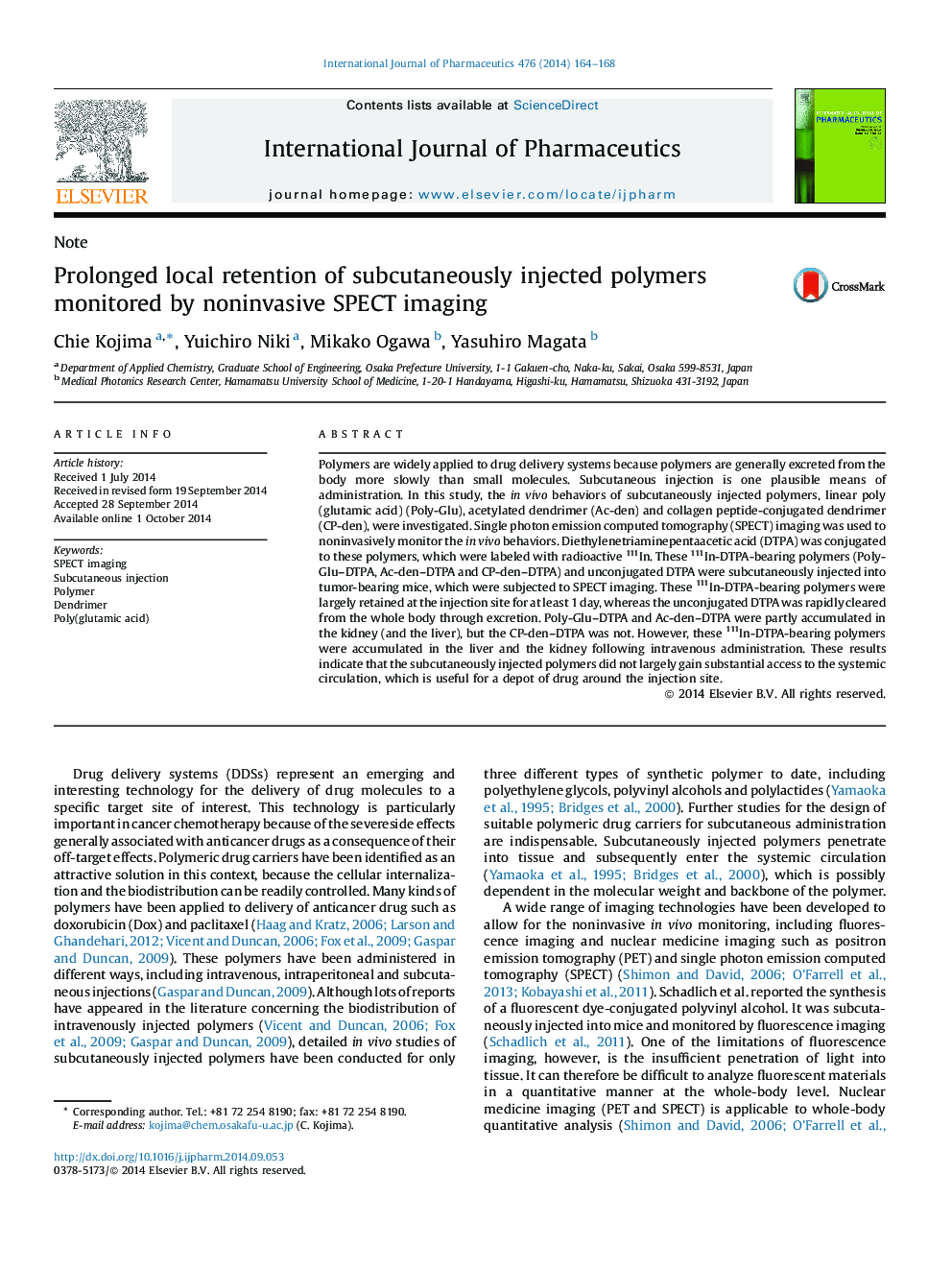| Article ID | Journal | Published Year | Pages | File Type |
|---|---|---|---|---|
| 2501733 | International Journal of Pharmaceutics | 2014 | 5 Pages |
Polymers are widely applied to drug delivery systems because polymers are generally excreted from the body more slowly than small molecules. Subcutaneous injection is one plausible means of administration. In this study, the in vivo behaviors of subcutaneously injected polymers, linear poly(glutamic acid) (Poly-Glu), acetylated dendrimer (Ac-den) and collagen peptide-conjugated dendrimer (CP-den), were investigated. Single photon emission computed tomography (SPECT) imaging was used to noninvasively monitor the in vivo behaviors. Diethylenetriaminepentaacetic acid (DTPA) was conjugated to these polymers, which were labeled with radioactive 111In. These 111In-DTPA-bearing polymers (Poly-Glu–DTPA, Ac-den–DTPA and CP-den–DTPA) and unconjugated DTPA were subcutaneously injected into tumor-bearing mice, which were subjected to SPECT imaging. These 111In-DTPA-bearing polymers were largely retained at the injection site for at least 1 day, whereas the unconjugated DTPA was rapidly cleared from the whole body through excretion. Poly-Glu–DTPA and Ac-den–DTPA were partly accumulated in the kidney (and the liver), but the CP-den–DTPA was not. However, these 111In-DTPA-bearing polymers were accumulated in the liver and the kidney following intravenous administration. These results indicate that the subcutaneously injected polymers did not largely gain substantial access to the systemic circulation, which is useful for a depot of drug around the injection site.
Graphical abstractFigure optionsDownload full-size imageDownload high-quality image (181 K)Download as PowerPoint slide
